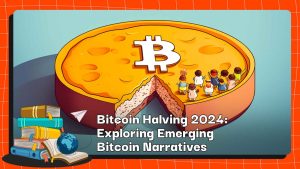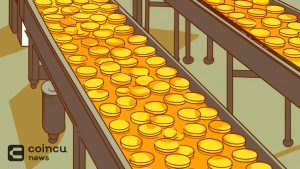Transform Your Digital Art Into NFTs And Cash In On Crypto Craze
Non-fungible tokens (NFTs) have indeed become increasingly popular as a way for artists to monetize their digital art and for collectors to invest in unique and valuable digital assets.
By creating and selling NFTs, artists can potentially earn money from their digital art in a way that was not previously possible. NFTs allow artists to authenticate their work, establish provenance, and sell their digital art as one-of-a-kind collectibles.
However, while there is certainly a lot of hype and interest around NFTs at the moment, it’s important to approach them as an investment with caution. The NFT market is still relatively new and volatile, and the value of NFTs can be subject to fluctuations based on a variety of factors.
If you are an artist considering creating and selling NFTs, it’s important to do your research, understand the risks involved, and consider whether this is the right approach for you. Likewise, if you are a collector considering investing in NFTs, it’s important to understand the risks and potential rewards of this type of investment, as well as the market conditions and trends that may affect the value of NFTs over time.
NFTs can be a potentially lucrative and exciting way to monetize digital art and invest in unique digital assets, it’s important to approach them with caution and do your due diligence before diving in.
What is an NFT?
NFT (Non-Fungible Token) is a unique digital asset that is stored on a blockchain, which is a decentralized and secure ledger technology that records transactions. Unlike cryptocurrencies such as Bitcoin or Ethereum, which are fungible (i.e., interchangeable), each NFT is one-of-a-kind and cannot be replicated or exchanged for something else.
NFTs are typically used to represent digital art, collectibles, or other unique digital assets. They are created by an artist or creator and stored on a blockchain, which provides a secure and transparent way to verify ownership and authenticity.
Each NFT contains metadata, which is information such as the creator’s name, title, and description of the digital asset, and the date of creation. This metadata is stored on the blockchain along with the NFT itself, making it possible to verify ownership and trace the history of the NFT’s transactions.
NFTs can be bought and sold on various marketplaces, and their value is determined by market demand and other factors, such as the rarity, uniqueness, and historical significance of the digital asset represented by the NFT.
NFTs are a new and exciting way for artists and creators to monetize their digital work and for collectors to invest in unique and valuable digital assets.
What is crypto art?
Crypto art, also known as digital art, is a type of art that is created using digital technology and exists solely in a digital form. Crypto art is often associated with the use of blockchain technology and non-fungible tokens (NFTs), which provide a secure and transparent way to verify ownership and authenticity.
Crypto art can take many different forms, including digital paintings, illustrations, animations, and virtual reality experiences. It can be created using a variety of software and tools, and often involves the use of specialized digital art platforms and marketplaces.
One of the key features of crypto art is its ability to be bought and sold as NFTs. By creating and selling NFTs, artists can authenticate their work, establish provenance, and sell their digital art as one-of-a-kind collectibles. Collectors can invest in these unique digital assets, and their value is determined by market demand and other factors, such as the rarity, uniqueness, and historical significance of the digital art represented by the NFT.
Crypto art is an exciting and rapidly evolving field that allows artists and collectors to explore new forms of expression, monetization, and investment in the digital age.
How to turn your art into an NFT?
To turn your art into an NFT, you will need to follow these general steps:
- Choose the blockchain platform: You’ll need to decide which blockchain platform you want to use to mint your NFT. Ethereum is the most popular blockchain for NFTs, but there are other options available, such as Binance Smart Chain, Tezos, and more.
- Create a digital wallet: You will need a digital wallet that is compatible with the blockchain platform you have chosen. This wallet will hold the cryptocurrency you will use to pay for the gas fees associated with minting your NFT.
- Create your digital art: Create your digital art using any tools you are comfortable with. The digital art can be a still image, a GIF, an animation, or any other type of digital artwork.
- Prepare your art for minting: You’ll need to create metadata for your NFT, which includes details about the artwork, such as the title, description, and file type. You’ll also need to set the price and choose the royalty percentage you’ll receive if someone resells your NFT in the future.
- Mint your NFT: Minting an NFT means creating a unique token on the blockchain that represents your artwork. You’ll need to pay a gas fee in cryptocurrency to complete the transaction. There are several NFT marketplaces, such as OpenSea, that allow you to mint your NFT and sell it directly on their platform.
- List your NFT for sale: Once your NFT is minted, you can list it for sale on an NFT marketplace. You can set the price and choose whether you want to sell it as an auction or a fixed price.
Turning your art into an NFT can be a complex process, but it can also be a great way to monetize your digital artwork and establish provenance and authenticity. It’s important to do your research, understand the costs involved, and choose a reputable blockchain platform and marketplace for minting and selling your NFT.
Is coding necessary for NFTs?
Coding is not necessarily required to create or sell NFTs. However, some technical knowledge is helpful when it comes to minting NFTs and listing them for sale on NFT marketplaces.
To create an NFT, you typically need to upload your digital artwork or asset to an NFT minting platform, such as OpenSea or Rarible. You will also need to provide some information about the artwork, such as the title, description, and possibly a royalty percentage.
While you don’t need to know how to code to create and mint an NFT, you will need to have some basic knowledge of how to use the blockchain platform and any associated digital wallets to pay for the gas fees involved in creating the NFT.
Similarly, to sell your NFT on a marketplace, you will need to create a listing that includes details about the NFT, such as its price, description, and royalty percentage. You may also need to use some basic HTML and CSS to format the listing page.
While coding is not strictly necessary for creating and selling NFTs, having some technical knowledge and familiarity with blockchain technology can be helpful in navigating the process.
Choosing the NFT marketplace to make and sell your NFTs
When choosing an NFT marketplace to create and sell your NFTs, there are several factors to consider. Here are some key considerations to keep in mind:
- Reputation and trustworthiness: Look for an NFT marketplace that has a good reputation and a track record of successful sales. Read reviews and feedback from other users to get a sense of their experiences.
- User base and audience: Consider the size and engagement of the NFT marketplace’s user base. Are there a lot of active buyers and sellers on the platform? Does the marketplace have a specific niche or audience that matches your target market?
- Fees and costs: Look at the fees and costs associated with minting and selling NFTs on the platform. Some marketplaces may charge a percentage fee for each sale, while others may charge additional fees for minting NFTs or listing them for sale.
- User experience and features: Consider the user experience and features offered by the NFT marketplace. Is it easy to create and list NFTs? Does the platform provide tools and resources to help you promote and sell your NFTs?
- Platform and technology: Consider the platform and technology used by the NFT marketplace. Is it a well-established and reputable blockchain platform? Are there any technical limitations or issues that could impact the quality or security of your NFTs?
Some popular NFT marketplaces to consider include OpenSea, Rarible, SuperRare, Nifty Gateway, and Foundation. Ultimately, the best NFT marketplace for you will depend on your specific goals, preferences, and needs as an artist or seller.
Setting up a cryptocurrency wallet
To set up a cryptocurrency wallet, follow these steps:
- Choose a cryptocurrency wallet provider: There are many wallet providers available, such as Coinbase, MyEtherWallet, Exodus, and Trezor. Do some research to find a provider that is reputable, secure, and supports the cryptocurrencies you plan to use.
- Create an account: Once you’ve chosen a wallet provider, create an account by providing your email address and setting a password. Some providers may require additional verification steps, such as providing government-issued ID.
- Secure your account: Enable two-factor authentication and other security measures to protect your account from unauthorized access.
- Add funds: Add funds to your wallet by purchasing cryptocurrencies with a credit or debit card, bank transfer, or other payment methods supported by your wallet provider.
- Send and receive cryptocurrencies: Once you have funds in your wallet, you can send and receive cryptocurrencies by providing your wallet address to other users or exchanges.
- Keep your wallet secure: Make sure to keep your wallet and private keys secure by storing them in a safe place and never sharing them with anyone.
How to sell digital art as NFTs
To sell digital art as NFTs, follow these steps:
- Choose an NFT marketplace: Research and choose an NFT marketplace that fits your needs and goals as an artist. Popular marketplaces include OpenSea, Rarible, SuperRare, Nifty Gateway, and Foundation.
- Create an account: Create an account on your chosen NFT marketplace and complete any verification steps required.
- Mint your NFT: Upload your digital artwork to the NFT marketplace and use their minting tools to create an NFT. You will need to provide information such as the title, description, and any royalties you want to receive from future sales.
- Set a price: Set a price for your NFT based on factors such as the quality of your artwork, the size of the marketplace’s audience, and current market trends.
- List your NFT for sale: List your NFT for sale on the marketplace and promote it through your social media channels and other marketing efforts.
- Wait for a buyer: Wait for a buyer to purchase your NFT. Once it sells, you will receive payment in cryptocurrency directly to your wallet on the marketplace.
- Transfer ownership: Transfer ownership of the NFT to the buyer by initiating a transfer on the marketplace.
It’s important to note that the process of selling digital art as NFTs can be complex, and there are many factors that can impact the success of your sales. It’s important to do your research and take the time to create high-quality artwork and market your NFT effectively to maximize your chances of success.
DISCLAIMER: The Information on this website is provided as general market commentary and does not constitute investment advice. We encourage you to do your own research before investing.
Join us to keep track of news: https://linktr.ee/coincu
Annie
Coincu News






















